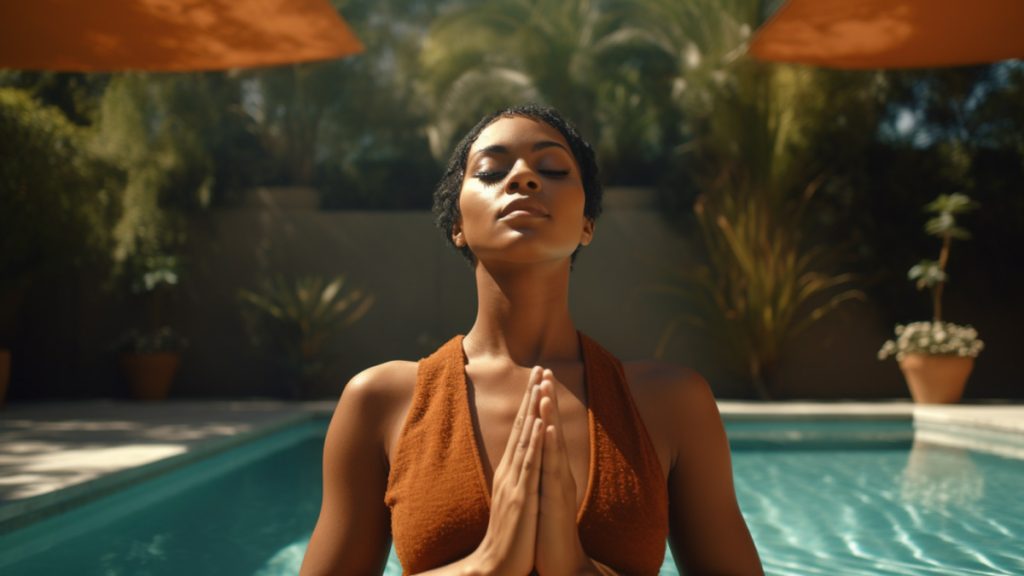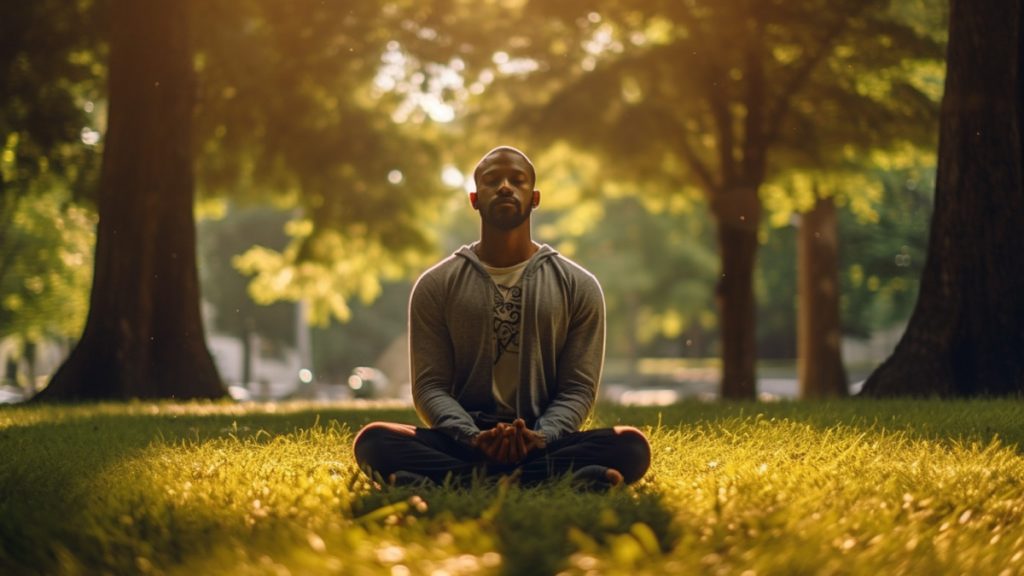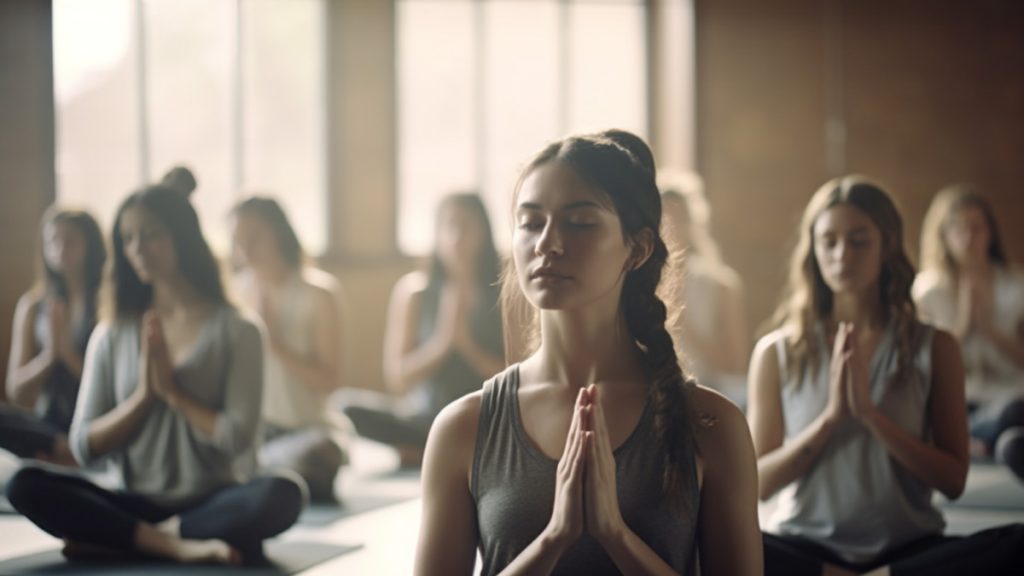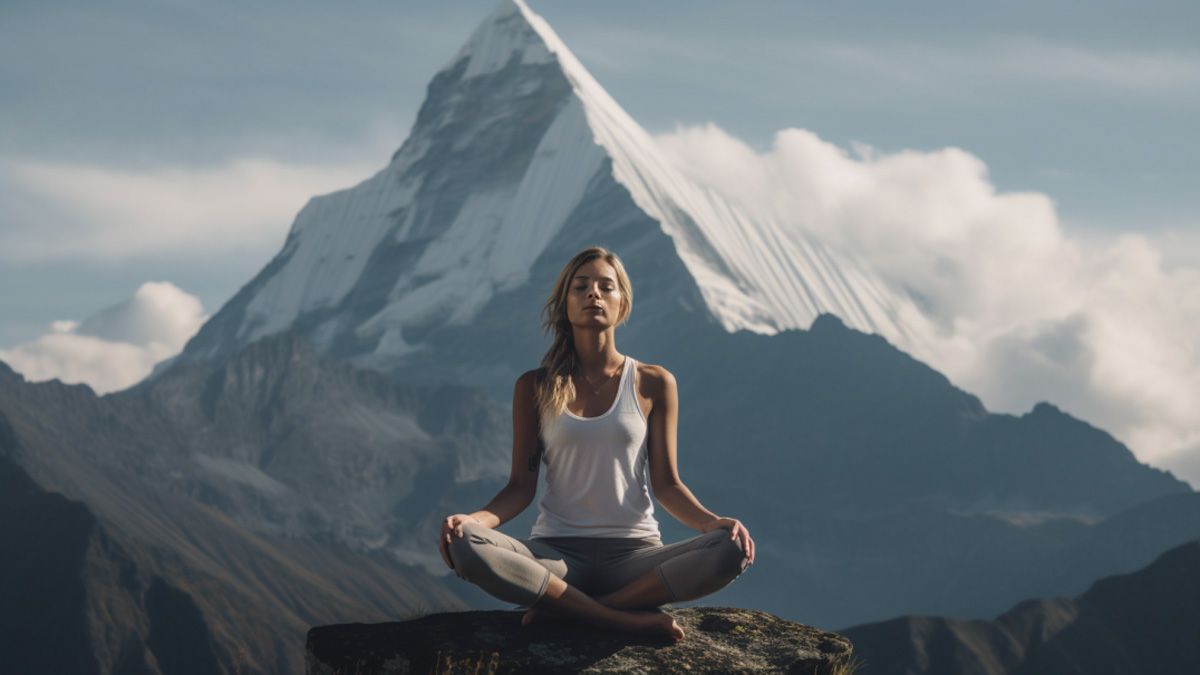Last Updated on April 6, 2024 by Avia
In the world of yoga, where body, mind, and spirit converge, the breath stands as the vital bridge connecting them all. We invoke the term “pranayama,” a Sanskrit word meaning “extension of the life force” or “breath control,” to emphasize the central role of breath in yoga. It’s not just air filling our lungs; it’s the essence of existence itself.
Imagine, stepping onto your sacred yoga mat, that very first inhalation signifies more than just a preparation for movement; it signifies an intention to merge with the present moment. You draw in life’s vital energy with each inhale, and release accumulated tension and stagnation with each exhale. This rhythmic exchange of breath lays the foundation for your entire yogic voyage.
Table of Contents
- The Basics of Yoga Breathing
- 3 Common Yoga Breathing Techniques
- Breathwork for Mind and Body
- Incorporating Breath into Your Yoga Practice
- Breathing for Health and Wellness: Benefits of Yoga Breathing
- Best Tips for Beginners Learning How to Master Yoga Breathing
- Frequently Asked Questions About Yoga Breathing
- Last Thoughts on Mastering Yoga Breathing

The Basics of Yoga Breathing
Pranayama, often referred to as the “art of breath control,” represents a profound facet of the yogic journey. It’s not merely about inhaling and exhaling; it’s about awakening to the rhythm of life itself. This art empowers us to navigate the currents of existence with grace and mindfulness. At the core of pranayama lies the understanding that breath is not just a physical process but a vehicle for the universal life force. Each breath carries the potential for transformation, offering a pathway to profound self-realization.
Central to the practice of conscious breathing in yoga is the engagement of the diaphragm. This integral muscle is dome-shaped, and it separates the chest from the abdomen. The mighty diaphragm plays a pivotal role in deepening our breath and promoting relaxation. When we inhale, the diaphragm contracts, expanding the lungs and drawing in fresh air. As we exhale, it relaxes, allowing for a complete release of stale air and any accumulated stress or tension. This diaphragmatic dance optimizes oxygen exchange and massages the internal organs, promoting overall well-being.
To delve deeper into the basics of yoga breathing and to practice pranayama under expert guidance, consider joining Yoga Classes Ubud. These classes provide a nurturing environment to refine your breathing, breathwork, and mindfulness, providing you with a transformative experience.

3 Common Yoga Breathing Techniques
Each one of the essential pranayama techniques illuminates the path to inner balance and self-mastery. In other words, there are different types of breathwork in yoga, and here are a few for your practices:
1. Ujjayi Breath: The Victorious Breath
Often referred to as the “Victorious Breath,” this technique constricts the back of your throat while inhaling and exhaling, creating a gentle, ocean-like sound. Ujjayi breath enhances concentration and generates internal heat, promoting purification and mental focus.
2. Kapalabhati Breath: The Skull-Shining Breath
In Kapalabhati, forceful exhalations are followed by passive inhalations. This dynamic practice clears the mind, energizes the body, and cleanses the respiratory system. It’s a potent tool for invigorating your yoga practice. It’s known as “skull-shining breath” because Kapala means skull, and bhati means to shine – plus, this practice leaves your mind feeling clean and fresh – hence, shiny skull breath.
3. Anulom Vilom: The Alternate Nostril Breathing
A great unifying practice, Anulom Vilom balances the left and right hemispheres of the brain, harmonizing the mind’s dualistic tendencies. By alternating the breath between nostrils, you enhance mental clarity, reduce stress, and experience inner peace.

Breathwork for Mind and Body
The breath is the bridge between mind and body, offering profound benefits for both. In this section, we delve into the transformative impact of yoga breathing on mental well-being and physical vitality.
The Mindful Breath
Through conscious breath, you can calm the fluctuations of the mind, reduce stress, and enhance emotional balance. The breath becomes your sanctuary, a place to retreat to in moments of turbulence, providing solace and serenity.
The Breath of Vitality
Beyond the mind, yoga breathing bestows vitality upon the body. It ensures efficient oxygenation of cells, promoting physical health and resilience. You infuse your body with life-giving energy; with each exhalation, you release toxins and tension. It’s a dance of rejuvenation.
The Meditative Breath
Breathwork and meditation share an unbreakable bond. The breath becomes the anchor, grounding you in the present moment as you journey inward. Through conscious breath, you pave the way for profound meditation experiences, transcending ordinary awareness and touching the realms of the sublime.
If you seek to dive deeper into the transformative realm of breathwork, consider exploring breathwork practices. Breathwork Bali offers a nurturing environment to deepen your understanding of the mind-body connection through the art of conscious breathing.
Incorporating Breath into Your Yoga Practice
Understanding how to seamlessly integrate conscious breath into your physical practice is essential. Yoga asanas, or postures, are physical exercises and a dynamic interplay of breath, body, and mind. To enhance your practice, synchronize each movement with your breath. Inhale to expand and prepare, exhale to deepen and release. Let the breath guide your asanas like a gentle current.
Proper breath awareness can significantly impact your yoga experience. It promotes flexibility by allowing your muscles to relax and stretch more effectively. Additionally, it aids in balance, as conscious breath stabilizes your mind and body, helping you hold challenging poses with greater ease.
As you move through your practice, cultivate breath awareness. Pay attention to the subtleties of each breath—its rhythm, depth, and quality. The breath becomes your inner mirror, reflecting the state of your practice and emotions. With mindful breath, you navigate both physical and inner landscapes.

Breathing for Health and Wellness: Benefits of Yoga Breathing
Different breath techniques offer specific health benefits. For instance, deep, diaphragmatic breathing can lower blood pressure and reduce the heart rate, promoting cardiovascular health. Breath retention techniques, like Kumbhaka, enhance lung capacity and oxygenation, fostering robust respiratory health. Your breath holds the potential for transformation and well-being. By exploring and incorporating specific breath practices into your life, you unlock a holistic approach to health and vitality.
The benefits of incorporating yoga breathing into your routine are numerous, and here are a few more ways yoga breathing can revolutionize your life:
It Arrests Stress
As you might expect, practicing yoga breathing can help reduce stress levels. Taking slow, deep breaths signals our parasympathetic nervous system to activate relaxation responses in the body. This helps calm our minds and release tension from our muscles. Furthermore, consistent engagement with yogic breathing techniques has been shown to lower blood pressure levels in individuals with hypertension or high blood pressure conditions.
Respiration Restoration
In addition to reducing stress, yoga breathing improves lung function. By consciously focusing on inhaling deeply and exhaling completely, we increase oxygen intake and remove toxins from the body more efficiently. This leads to improved respiratory health over time.
Revitalization
Moreover, regular practice of pranayama can boost energy levels. Deep inhalations provide a fresh supply of oxygen to the brain and vital organs, revitalizing the body’s systems. It can also improve concentration and enhance mental clarity.

Best Tips for Beginners Learning How to Master Yoga Breathing
If you’re a beginner looking to master yoga breathing, here are some helpful tips to get you started.
- First and foremost, it’s important to get tucked into your favorite spot for meditation, mindfulness, or stillness and focus on your breath. Eliminate distractions and create a serene atmosphere that allows you to fully immerse yourself in the practice.
- Next, start with simple breathing exercises such as deep belly breaths or alternate nostril breathing. These basic techniques will help you become more aware of your breath and develop control over it.
- As a beginner, don’t rush the process. Take your time and be patient with yourself. Remember that mastering yoga breathing takes time and consistent practice.
- Another important tip is to listen to your body’s natural rhythm. Pay attention to how your body responds during each inhalation and exhalation. Adjust your pace accordingly, and never force your breath.
- Staying consistent is a big deal when it comes to mastering yoga breathing, so keep practicing. Incorporate regular pranayama sessions into your daily routine for maximum benefit. Even just a few minutes each day can make a significant difference over time.
- Seek guidance from an experienced yoga teacher, or consider joining a beginners’ class specifically focused on pranayama techniques. A knowledgeable instructor can provide valuable insights, correct any mistakes in technique, and offer personalized guidance tailored to your needs.
Frequently Asked Questions About Yoga Breathing
Not at all! In fact, anyone can learn and master yoga breathing with a little practice. It may feel strange or challenging at first, but with consistency and patience, it becomes second nature.
You can incorporate yoga breathing into your daily routine. Even just a few minutes of focused breathwork daily can significantly impact your overall well-being.
Absolutely! While attending a guided class or working with an experienced instructor is beneficial, you can also practice on your own. Many online resources and videos provide step-by-step instructions for different pranayama techniques.
The effects of practicing yoga breathing vary from person to person. Some individuals may notice immediate improvements in their mental clarity and stress levels after just one session. For others, it may take several weeks or months before they experience noticeable changes.
It’s always important to listen to your body during any physical activity, including pranayama. If you feel lightheaded or dizzy while practicing deep breaths, slow down or return to normal breathing until you feel comfortable again. If you have any pre-existing medical conditions or concerns, consult with your doctor or a medical professional before starting any new exercise regimen – including yoga breathing.

Last Thoughts on Mastering Yoga Breathing
In conclusion, remember that mastering yoga breathing is an ongoing process. It requires patience, practice, and dedication. By incorporating these techniques into your daily life, you will gradually experience the transformative effects they can have on both your physical and mental well-being.
Keep exploring new breathwork methods and continue deepening your understanding of how breath connects mind and body – because when it comes to unlocking the full potential of yoga’s power through breath control…the possibilities are endless! As always, thanks for reading!
Want more? Me too! That’s why I’ve also got this for you on Whats-Your-Sign:







